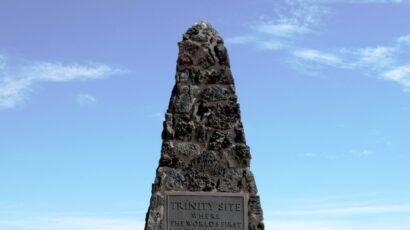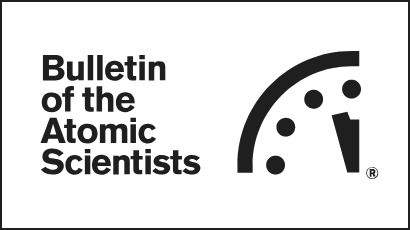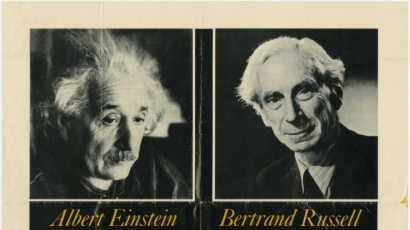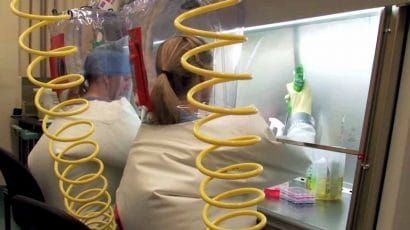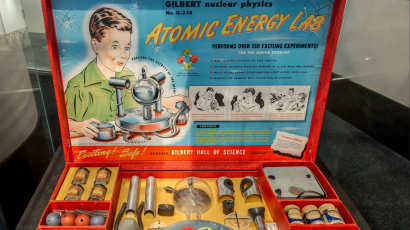Search results for nuclear terrorism
Virtual Tour: Turn Back the Clock “] More than 300,000 people attended the People’s Climate March in September of 2014, including 14-year-old environmental activist Xiuhtezcatl Martinez. “We have been presented with an opportunity,” Martinez said, “because what better time to be born than now? We exist at a perfect time, because this generation, these people … Continued
Responsible science: What Sam Altman can learn (and not learn) from Nobel and Oppenheimer
Today's innovators can learn about being mindful scientific stewards by looking at yesterday's innovators such as Robert Oppenheimer.
Better to bear the ills we have
Up to a certain point, nuclear arms control and disarmament walk hand in hand. But when they encounter the issue of deterrence and its utility, they quickly part ways. This is the central point that my roundtable colleague Joelien Pretorius made in her third essay, and I concur with it. But why exactly do arms … Continued
A view from Southeast Asia
Nuclear technology has always been a contentious issue. The countries that originally took the lead in developing and acquiring nuclear technology understood very clearly the dangers that the technology posed, and have often sought to prevent nuclear know-how from spreading further. Other nations, conscious of the ways in which nuclear technology could benefit them, are … Continued
Bertrand Russell and Albert Einstein’s Manifesto
Virtual Tour: Turn Back the Clock “] In 1955, one year after the United States tested a hydrogen bomb 1,000 times more powerful than the bomb used on Hiroshima, an international group of scientists warned that “H-bombs might quite possibly put an end to the human race.” The Cold War was escalating-rapidly. Led by British … Continued
It is 5 minutes to midnight
It is five minutes to midnight. Two years ago, it appeared that world leaders might address the truly global threats that we face. In many cases, that trend has not continued or been reversed. For that reason, the Bulletin of the Atomic Scientists is moving the clock hand one minute closer to midnight, back to its time in 2007.
Doomsday Clock moves to five minutes to midnight
It is five minutes to midnight. Two years ago, it appeared that world leaders might address the truly global threats that we face. In many cases, that trend has not continued or been reversed. For that reason, the Bulletin of the Atomic Scientists is moving the clock hand one minute closer to midnight, back to its time in 2007.
Se busca una caja de herramientas más grande para el OIEA
El objetivo básico del Tratado de No Proliferación Nuclear (TNP) es relativamente claro: prevenir la propagación de armamento nuclear; dar garantías, por medio de salvaguardias internacionales, de que las actividades nucleares pacíficas no desemboquen en la producción de armamento nuclear; promover, en la mayor medida posible y de manera consistente con las disposiciones del tratado, … Continued
Los beneficios medioambientales conllevan riesgos de seguridad
La energía nuclear ha suscitado un nuevo interés en los últimos años, en parte por su capacidad de generar electricidad produciendo emisiones insignificantes de gases de efecto invernadero. Sin embargo, para muchos de los países en desarrollo, poder establecer y mantener un sector de energía nuclear supone una plétora de retos, sobre todo para "los … Continued
Los beneficios medioambientales conllevan riesgos de seguridad
La energía nuclear ha suscitado un nuevo interés en los últimos años, en parte por su capacidad de generar electricidad produciendo emisiones insignificantes de gases de efecto invernadero. Sin embargo, para muchos de los países en desarrollo, poder establecer y mantener un sector de energía nuclear supone una plétora de retos, sobre todo para “los … Continued
Political forest, technical trees
In Round Two, my colleague Akira Kawasaki discussed the Fukushima disaster and its implications for nuclear weapons, while Mustafa Kibaroglu delved into Japan's stockpiles of plutonium. Both authors made important points about the technical and humanitarian aspects of nuclear safety and security. But it's important not to lose sight of the central political question that … Continued
Se busca una caja de herramientas más grande para el OIEA
El objetivo básico del Tratado de No Proliferación Nuclear (TNP) es relativamente claro: prevenir la propagación de armamento nuclear; dar garantías, por medio de salvaguardias internacionales, de que las actividades nucleares pacíficas no desemboquen en la producción de armamento nuclear; promover, en la mayor medida posible y de manera consistente con las disposiciones del tratado, … Continued
Ángeles y demonios: un juego peligroso
En su segundo ensayo de la Mesa Redonda, Selim Can Sazak siguió asegurando que el programa nuclear iraní es agresivo por naturaleza. Beenish Pervaiz ya detalló la postura de Irán sobre la disputa que tiene con el Organismo Internacional de Energía Atómica (OIEA) — que las actividades nucleares de Irán se llevan a cabo bajo … Continued
Ángeles y demonios: un juego peligroso
En su segundo ensayo de la Mesa Redonda, Selim Can Sazak siguió asegurando que el programa nuclear iraní es agresivo por naturaleza. Beenish Pervaiz ya detalló la postura de Irán sobre la disputa que tiene con el Organismo Internacional de Energía Atómica (OIEA) — que las actividades nucleares de Irán se llevan a cabo bajo … Continued
Action, not arguments
In Round One, my colleagues and I largely agreed that a nuclear detonation, whether deliberate or accidental, would affect states and individuals in very severe ways, and the harm would not be constrained by borders. History substantiates this: Past detonations have carried disastrous consequences, both immediate and long-term, and this has held true (albeit in … Continued
Futility, acceptance, progress
Maryam Javan Shahraki and Selim Can Sazak have conducted quite a debate on Iran's nuclear program. It has been a microcosm of the international debate on the same issue, in which many questions are raised and few are answered. In my view, finger-pointing over Iran has become, and will continue to be, an exercise in … Continued
Bulletin Overview
Nuclear Weapons The nuclear age dawned with the creation of the first atomic bombs dropped by the United States on Hiroshima and Nagasaki in August 1945 at the end of World War II. During the Cold War years of 1949 to 1990, hostility between the United States and the Soviet Union defined the nuclear threat. Each superpower … Continued
Researchers hacked a lab’s pathogen containment system. Was it a good idea to publish the results?
Researchers in the life sciences have been publishing research that could be misused by bad actors, like a recent study on hacking the containment systems of labs and specialized hospital rooms. There are few guardrails in place to prevent the rapid publication of so-called "dual-use" research.
World’s Most Dangerous Toy? Radioactive Atomic Energy Lab Kit with Uranium (1950)
Virtual Tour: Turn Back the Clock “] The Gilbert U-238 Atomic Energy Lab was an actual radioactive toy and learning set sold in the early 1950s. The $49.50 set came with four samples of uranium-bearing ores (autunite, torbernite, uraninite, and carnotite), as well as a Geiger-Mueller radiation counter and various other tools. The set also … Continued
The Bulletin of the Atomic Scientists begins publishing in 1945
Virtual Tour: Turn Back the Clock “] A brief history: September 26, 1945: A group of Manhattan Project scientists from the University of Chicago forms the “Atomic Scientists of Chicago.” December 10, 1945: The Atomic Scientists publish the first issue of their newsletter, the Bulletin of the Atomic Scientists. Editor Eugene Rabinowitch realized that with … Continued

